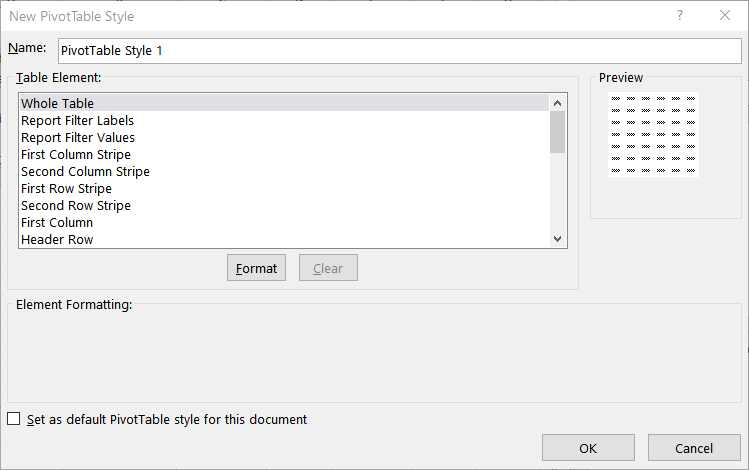Please Note: This article is written for users of the following Microsoft Excel versions: 2007, 2010, 2013, 2016, 2019, and 2021. If you are using an earlier version (Excel 2003 or earlier), this tip may not work for you. For a version of this tip written specifically for earlier versions of Excel, click here: Formatting a PivotTable.
Written by Allen Wyatt (last updated December 30, 2025)
This tip applies to Excel 2007, 2010, 2013, 2016, 2019, and 2021
You know that you can format cells in your worksheets by using the different tools on the various Ribbon tabs. Excel also allows you to format PivotTables using these same techniques. You should know, however, that the best way to format PivotTables is to use the AutoFormat feature. This is because whenever you manipulate the table or refresh the data, any explicit formatting you might have applied (using the Ribbon tabs) has a good chance of being eliminated by Excel. This limitation does not apply when you use the built-in AutoFormats.
To use the AutoFormat feature, select a cell in the PivotTable, and then use one of these techniques:
The differences between these two options are in how the available choices are accessed. If you choose the first option, you have a large number of table formats that can be applied to your PivotTable. If you choose the second option, then the same table formats are available, but it takes longer to scroll through them all.
It is also interesting that Excel allows you to define your own formats to be applied to PivotTables. This is very powerful, as it allows you to define and preserve just the formatting you want. Follow these steps:

Figure 1. The New PivotTable Style dialog box.
Regardless of the name (which varies based on the version of Excel you are using), the dialog box allows you to independently select different parts of the PivotTable (called elements) and apply different formatting to them. You can get as detailed as you want and then save the style under the name specified at the top of the dialog box.
After a style is defined, you can apply it in the same way that you apply any other table style to your PivotTable.
ExcelTips is your source for cost-effective Microsoft Excel training. This tip (10283) applies to Microsoft Excel 2007, 2010, 2013, 2016, 2019, and 2021. You can find a version of this tip for the older menu interface of Excel here: Formatting a PivotTable.

Program Successfully in Excel! This guide will provide you with all the information you need to automate any task in Excel and save time and effort. Learn how to extend Excel's functionality with VBA to create solutions not possible with the standard features. Includes latest information for Excel 2024 and Microsoft 365. Check out Mastering Excel VBA Programming today!
A PivotTable is a great way to aggregate and analyze data. Sometimes, though, it can be difficult to figure out how to ...
Discover MorePivotTables are used to analyze huge amounts of data. The number of rows used in a PivotTable depends on the type of ...
Discover MoreWhen you create a PivotTable, it can have a name. You may want this name to appear within the PivotTable itself. There is ...
Discover MoreFREE SERVICE: Get tips like this every week in ExcelTips, a free productivity newsletter. Enter your address and click "Subscribe."
There are currently no comments for this tip. (Be the first to leave your comment—just use the simple form above!)
Got a version of Excel that uses the ribbon interface (Excel 2007 or later)? This site is for you! If you use an earlier version of Excel, visit our ExcelTips site focusing on the menu interface.
FREE SERVICE: Get tips like this every week in ExcelTips, a free productivity newsletter. Enter your address and click "Subscribe."
Copyright © 2026 Sharon Parq Associates, Inc.
Comments